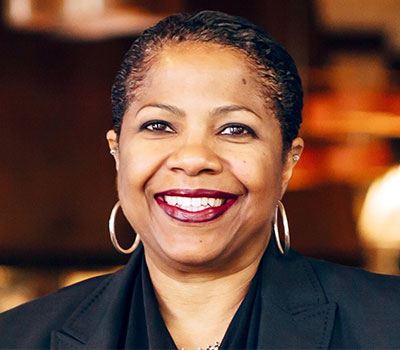Tonya Pitts is the wine director at One Market in San Francisco, a staple that turned 30 this February, and one of the last remaining restaurants in the city to boast a vast number of seats—448. I caught up with her after a recent trip to Attica (the Greek wine region surrounding Athens) where she told me she “found a solution for her Sancerre problem.” —Alissa Bica


Is there a Sancerre problem?
It’s crazy because everyone I’ve spoken to has the same issue. None of us can keep Sancerre or sauvignon blanc in stock. I think with sauvignon blanc, it’s more about the price point. Everything has gotten so much higher because of the fires in California and the scarcity—not having great vintages and the vintages being so short—which is also the same issue that they’ve had in the Loire with Sancerre—and everyone just really wanting it. But I found an assyrtiko from Attica that is really flinty and limestone, just lovely, the perfect alternative to Sancerre!
Has white Burgundy also been hard to find?
I haven’t been able to find more Bourgogne at the by-the-glass price point. I have found a Chablis that is classic—mineral and flinty. I’m doing that by-the-glass because pricing is very good, at $20 wholesale. I don’t want to go more than that for a white Burgundy because I think people get sticker-shocked. Same with chardonnay from Napa—pricing has gone up because in certain years there hasn’t been a lot of wine, and the cost of producing the wine is higher in certain regions. I’m seeing price increases two to three times a year from producers. For the price point ($16 a glass), my House of Brown chardonnay sells really well.
You mentioned that there was a slight decrease in wine sales from the previous year. Why was that?
It’s mostly because we aren’t open six days a week, like we were before. Hours are also shorter. There is a little decrease in wine sales because of that, but just about everybody who comes in is having a cocktail or a glass of wine. The happy-hour business is starting to pick up as well. There are days in the middle of the week where the bar is full; and it’s not full of cocktails, it’s full of wine.
What are guests drinking?
I think that wine drinkers are in discovery mode and have been since the pandemic. Maybe they’re not just drinking their tried-and-true because of higher prices, but also they just want to try something different. That opens the door for people. Alta Mora Etna Carricante was our biggest new success. That change has been really good for me because, even though my staff is smaller now, we’re still tasting wine every day. It keeps it exciting for the staff, which translates out onto the dining room floor.
Why was the Stardust Napa Valley Cabernet Sauvignon a staff favorite?
Stardust is a project from the owner of the restaurant, Michael Dellar, and a dear friend of his. It’s their home fruit in Napa Valley, right off Soda Canyon Road, and a project they’ve had since 1996; that fruit has been the source for “Jack’s Masterpiece” from Hall for many, many years. In 1998 they decided to make a small amount for themselves. Over the years, I’ve been able to have the wine, every once in a while, as an aged wine and, more recently, as a current vintage. I’ve been able to pour the ’13, ’14, ’15 and ‘16 by the glass; now I have the ’17 as well. It’s an exciting niche for us, and a favorite amongst the staff and guests because it’s delicious. We don’t push that it’s the owner’s property. We let the wine speak for itself.
What are guests still asking for in Napa Valley?
They’re asking for Napa a lot in terms of cabernet. Cab is still king. But, again, pricing plays into the equation, particularly with our business guests. The world was their oyster for a very long time, and selling a $500 bottle of cab was not an issue. Now, I have guests saying they don’t want to spend more than $200 for a bottle of cabernet. When we get into pinot noir, they don’t want to spend more than $140-$150, which knocks out a lot of wines with name recognition.
Have you noticed any other trends in guests’ taste?
I’m noticing that people aren’t wanting the big, bold red wines. I have less zinfandel on my list than I’ve ever had. I usually have ten, but now I have four. They’re wanting something that transcends the palate, that works with all types of food and dishes. When I’m talking to people about their meal, I want to lead them in a direction that is going to work with everything on the table, and I’m finding that’s where people’s palates are going. So, we’re not just looking at pinot noir, we’re looking at other alternatives. We’re looking at grenache, mourvedre, carignan or nebbiolo that is not necessarily Barolo. We’re looking outside of the box. If the pricing is right, people are willing to experiment and take your advice. When you tell someone, “If you don’t like it, I’ll take it away,”—and you really mean that—there’s trust. But that means really listening to what the guest is saying and not thinking about your own preferences.
Based in Los Angeles, California, Alissa Bica is the Associate Editor and Spirits Critic at Wine & Spirits. She is also a sommelier at 71 Above and co-runs the home wine tasting company, Côte Brune and Blonde. In any rare moments of free time, she writes about obscure grape varieties in the blog Off the Beaten Wine Path.
This is a W&S web exclusive. Get access to all of our feature stories by signing up today.



















